
Terry Evans still remembers the day when she saw a woman’s hand turning “greasy black” after wiping her car. Evans, a photographer and visual artist, reflected on that day from two years ago and how it changed her personally. She became an activist fighting pollution and petcoke, a grimy byproduct of steel-making that’s still present on the city’s Southeast Side.
Petcoke: Tracing Dirty Energy, an exhibition at the Museum of Contemporary Photography at Columbia College Chicago, combines efforts from artists like Evans and community activists. Featuring the works of eight artists, the showcase, which opened to the public in July, runs through Oct. 9. The exhibit aims to bring attention to the decade-long petcoke storage by KCBX Terminals Company along the banks of the Calumet River and its impact on the lives of Chicago’s Southeast Side residents.
The exhibition provides multi-media platforms that can “visualize” what’s going on inside the industrial areas and around the neighborhoods. Upcoming events includes workshops and a full-day symposium to inform people of the environmental hazards posed by petcoke industries.
Petroleum coke, or petcoke, is a dust-like byproduct from oil refining. It comes down by rail and is piled on the Southeast Side of Chicago before it’s sold to China and Mexico. The substance may pollute air, land, water and cause respiratory disease.
“These are aerial photos taken from a helicopter,” explained Whitten Sabbatini, a Columbia graduate student and tour guide with the museum, located at the corner of Harrison and Michigan avenues. “You can see how much petcoke is over there, how it is stored, and how houses are covered by black dust.
“You can see smoke stacks and trains from the scale of the photos and how largely they are printed,” Sabbatini added.

Evans took those photos after being introduced to the community in May 2014. She immediately decided to join the group after seeing a woman’s hand blackened by the petcoke dust while photographing the neighborhoods.
“Those who are not affected don’t have an idea of what it is like,” Evans said. “It’s like working in a different world. It’s different from downtown Chicago because it’s a very industrialized area.”
One of her photos vividly captures the size and color of the overwhelming petcoke piles. Evans said that was her favorite, adding: “It’s a beautiful picture, but it’s also looking like hell.”
While it was fascinating to work as an artist, Evans said what changed her life was working with the activists.
“As I joined the group, I also discovered they are very deeply knowledgeable. I realized that I didn’t fully understand their lives,” she said. “It’s not like I didn’t know, but it’s really different to see.”
The community activists have won a hard-fought legal battle against the KCBX’s oil project. The company earlier this year promised to clean up the coal and petcoke piled along the river, and to build facilities that could store petcoke while complying with city guidelines.
Still, the fight against the petcoke industries is far from over. Southeast Side residents are still living close to where petcoke, coals and other dirty energy sources are being produced, stored and transferred for geographic convenience.
“I’m convinced they are not going to take care of the problem 100 percent,” said Peggy Salazar, 63, executive director of the Southeast Environmental Task Force, who lives three blocks away from the petcock piles.
“The salts, the tar sands, the petcoke–they are still operating,” said Salazar, who joined the community because she was “very disappointed” that the heavy industries remained so close to the neighborhoods over the decades.
“When they load things, process things, there is impact on this area and our community,” Salazar said. “It’s more than just CO2. It’s dust that enters waterways, into drinking water.”
The exhibition helped the activists spread their message to broader groups of people, but they are still fighting for the community, trying to gain more support. Salazar said it sent the information out to where it would never go.
The Task Force’s next plan is to build up the Green Economic Industrial Corridor, an idea aimed at bringing in cleaner and safer industries to the community.
“We want businesses that use renewable energy or generate renewable energy,” Salazar said. “The only solution to the petcoke issue is to get these industries out of residential areas. We don’t want those that use fossil fuels. We want to move forward.”
To learn more:
Visit the Petcoke: Tracing Dirty Energy website.




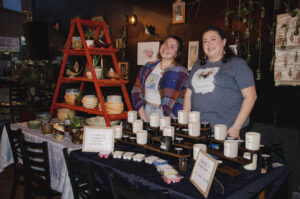


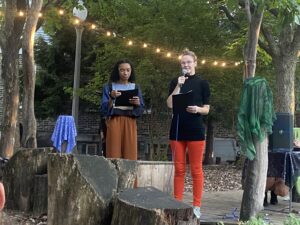
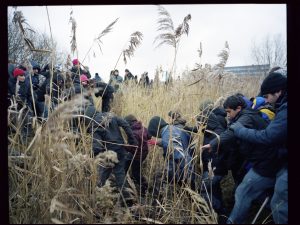


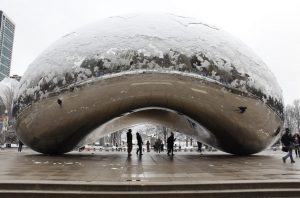





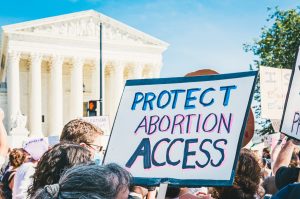

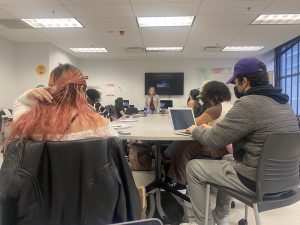

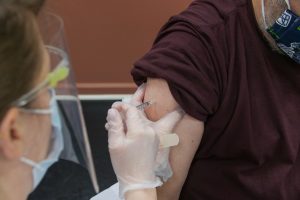




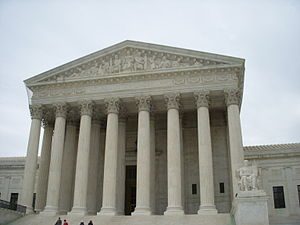
Be First to Comment